When it comes to Italian art, the list of talented artists and painters is long and distinguished.
From the grandeur of Michelangelo’s Sistine Chapel to the passion of Caravaggio’s chiaroscuro, the legacy of Italian art continues to captivate and enthrall.
Join me on a journey through the top 10 most famous Italian artists and painters, and discover the brilliance of their masterpieces.
Table of Contents
- Introduction to Italian Art
- Top 10 Italian Artists
- How to learn Italian with Art
- Conclusion
Introduction to Italian Art
From the groundbreaking Renaissance period, where the likes of da Vinci, Michelangelo, and Raphael created masterpieces that set the standard for beauty, composition, and technical skill, to the diverse artistic styles and traditions that reflect Italy’s complex cultural identity.
Italian art’s influence is pervasive, with techniques like perspective and chiaroscuro revolutionizing the art world and inspiring artists across Europe and beyond. Art movements like Baroque and Neoclassicism owe their roots to Italian art, with their influence still discernible in modern art today.
For centuries, Italy has been at the forefront of European art. The legacy of Italian artists is immense, with their contributions deeply embedded in our cultural history.
Their works are so famous that one of the names on this list is likely the first to come to mind when asked about famous artists or paintings. From the Roman Empire to the Renaissance and beyond, Italy’s influence on art has been immense.
Delve into this article to discover the top 10 famous Italian artists, some of whom you may already adore!
Top 8 Italian Artists
Leonardo da Vinci (1456-1519)
He was a master artist, scientist, inventor, and writer, whose diverse interests and pursuits made him a true embodiment of the Renaissance spirit. Born in the town of Vinci, Tuscany in 1452, he showed an early aptitude for art and science and was apprenticed to the artist Andrea del Verrocchio in Florence at the age of 14.
Under Verrocchio’s guidance, da Vinci developed his skills as a painter, sculptor, and engineer. He worked on a variety of projects, from painting altarpieces and portraits to designing weapons and military machinery. In painting, he invented techniques such as sfumato which set him apart from his contemporaries.
Da Vinci’s curiosity was not limited to art, however. He made significant contributions to fields such as anatomy, optics, and hydrodynamics. His fascination with human anatomy led him to dissect over 30 human corpses, delving deep into the intricacies of the body. His anatomical drawings and notes are still considered some of the most accurate and detailed of their time.
In addition to his work as an artist and scientist, da Vinci was also a prolific inventor. He designed flying machines, submarines, and military weapons, among other things. Although many of his designs were never built in his lifetime due to their complexity, his visionary ideas laid the groundwork for many future inventions.
Despite his many accomplishments, da Vinci faced his share of setbacks and disappointments. He struggled with perfectionism and often left projects unfinished or abandoned them altogether.
Michelangelo (1475-1564)
Michelangelo di Lodovico Buonarroti Simoni, known to the world simply as Michelangelo, was a true artistic prodigy.
Michelangelo’s style was characterized by dramatic and powerful forms, deep emotional intensity, and remarkable attention to detail. He was a perfectionist who worked tirelessly on his art, refining every detail until it was just right. His works, such as the David sculpture and the ceiling of the Sistine Chapel, are still celebrated today for their beauty and emotional power.
In addition to his talent as a sculptor and painter, Michelangelo was also a skilled architect. He designed several buildings, including the iconic dome of St. Peter’s Basilica in Rome, which he oversaw from start to finish.
Despite his fame and success, Michelangelo was a deeply introspective and melancholy figure. He was known for his reclusive nature and often kept to himself, devoting himself to his art and his spirituality.
Throughout his life, Michelangelo was driven by a deep religious faith, which inspired many of his works. He was fascinated by the human form and its ability to convey emotion and spirituality, and he believed that his art was a reflection of the divine.
In addition to his artistic pursuits, Michelangelo was also an accomplished poet, writing many sonnets and other poems throughout his life. His poetry was deeply personal and often reflected his thoughts on art, love, and spirituality.
Despite his incredible talent and artistic accomplishments, Michelangelo faced many challenges in his life. He was often plagued by financial difficulties and had to rely on commissions from wealthy patrons to support himself.
Today, Michelangelo’s legacy lives on, inspiring and influencing artists and art lovers around the world. His works continue to be celebrated for their beauty, their technical skill, and their emotional power, and he remains one of the greatest artists of all time.
Caravaggio (1571-1610)
Michelangelo Merisi da Caravaggio, better known as simply Caravaggio, was one of the most influential painters of the Baroque period. Born in Milan in 1571, Caravaggio’s life was marked by controversy, drama, and artistic innovation.
His dramatic use of light and shadow, or chiaroscuro, quickly set him apart from other artists of his time. Rather than relying on idealized figures and perfect compositions, Caravaggio used ordinary people as models for his paintings, creating works that were gritty, realistic, and emotionally charged.
But Caravaggio’s life was anything but calm and stable. He was imprisoned for assaulting a police officer and was known for carrying a sword.
Despite his frequent run-ins with the law, however, Caravaggio continued to produce powerful and groundbreaking paintings that captured the attention of art lovers across Europe.
The graphic portrayal of the Virgin Mary’s death in Caravaggio’s renowned artwork, “The Death of the Virgin,” caused considerable controversy during its time. The painting was criticized by church authorities, who objected to its realism and the way it challenged traditional religious iconography.
Despite the controversy, Caravaggio continued to push boundaries and explore new artistic frontiers.
Gian Lorenzo Bernini (1598 –1680)
Gian Lorenzo Bernini was a remarkable Italian artist and architect who left an indelible mark on the world of art. Born in Naples, Italy in 1598, Bernini showed an early talent for sculpture and began his career at the age of eight. His works were known for their dramatic and emotive qualities, capturing the essence of his subjects in a way that was both realistic and expressive.
Bernini was a prolific artist, producing a vast body of work over the course of his long career. In addition to sculpture, he also worked as an architect, painter, and playwright. His most famous works include the baldachin in St. Peter’s Basilica and the Fountain of the Four Rivers in the Piazza Navona, both of which were commissioned by Pope Urban VIII, who was a great admirer of Bernini’s talent.
Despite his success, Bernini was not immune to criticism and controversy. He was involved in a scandal in which his brother allegedly murdered his mistress, and he himself was accused of having an affair with a married woman. Nevertheless, Bernini remained deeply committed to his faith, seeing his art as a way to glorify God.
Bernini was known for his exceptional skill in marble carving, which he learned from his father, who was a sculptor as well. Bernini’s ability to transform a solid block of stone into a lifelike and expressive sculpture was unparalleled. He once said, “I am no ordinary sculptor, but a devout servant of God, and the task to which I have been called is not to represent the true form of man but to glorify God in His works.”
Bernini’s legacy continues to influence art and architecture to this day. His innovative techniques and emotive style set the standard for Baroque art, and his works can be found in museums and public spaces around the world.
In the end, Gian Lorenzo Bernini was a towering figure in the world of art and architecture, whose talent and innovation continue to inspire and captivate people centuries after his death.
Amedeo Modigliani (1884-1920)
Amadeo Modigliani was an Italian painter and sculptor who lived from 1884 to 1920. He is best known for his distinctive style, which features elongated figures and simplified forms.
Born into a Sephardic Jewish family in Livorno, Italy, Modigliani showed an early talent for art and began studying at the Accademia di Belle Arti in Florence at the age of 14. He later moved to Paris, where he became part of the vibrant artistic community of Montparnasse.
Modigliani’s work was influenced by a wide range of sources, including African art, Italian Renaissance painting, and contemporary European avant-garde movements. His paintings and sculptures were characterized by their expressive use of line and color, as well as their focus on the human form.
Modigliani’s personal life was marked by tragedy and controversy. He struggled with alcoholism and drug addiction and was known for his bohemian lifestyle and unconventional relationships.
Despite these challenges, Modigliani’s work continues to be celebrated for its unique vision and enduring influence.
Interestingly, Modigliani was known for his distinctive appearance as well as his art. He had a prominent nose and deep-set eyes and was often dressed in a dapper and elegant style, with a penchant for fedoras and long coats.
Modigliani’s personal life was also the subject of much speculation and gossip. He had a series of tumultuous relationships with women, including the poet Anna Akhmatova and the art model Jeanne Hébuterne, who later became his partner and the mother of his child.
Their tragic story, which ended with Hébuterne’s suicide just hours after Modigliani’s death, has added to the myth and allure surrounding Modigliani and his work.
Canaletto (1697 – 1768)
Giovanni Antonio Canal, known by his artistic name Canaletto, was an Italian painter of the 18th century. Born in Venice in 1697, he grew up in a family of artists, where his father was a theatrical scene painter. However, Canaletto did not follow in his father’s footsteps, instead, he began focusing on painting cityscapes and landscapes in his 20s.
Canaletto’s paintings were known for their incredible attention to detail and accuracy, capturing the unique beauty and character of Venice, with its canals, bridges, and distinctive architecture. His work was highly sought after by wealthy patrons, particularly the British aristocracy who were drawn to the exotic beauty of Venice.
As a prolific painter, Canaletto produced hundreds of paintings throughout his career, ranging from large-scale canvases depicting grand views of Venice to smaller, more intimate scenes of everyday life in the city. He was also a skilled printmaker, creating etchings and engravings based on his paintings, which helped to spread his fame throughout Europe.
Despite his success as an artist, Canaletto faced financial difficulties later in life, forcing him to sell many of his paintings.
Canaletto’s legacy continues to inspire and influence artists today.
Botticelli (1444–1510)
Sandro Botticelli was an Italian painter who lived in Florence during the Renaissance period. Born Alessandro di Mariano di Vanni Filipepi in 1445, he was nicknamed Botticelli, which means “little barrel,” by his family.
Botticelli is best known for his graceful, lyrical paintings of mythological and religious subjects. His most famous works include “The Birth of Venus” and “Primavera,” which are celebrated for their beauty, elegance, and symbolic richness.
Despite his artistic success, Botticelli’s life was not without its challenges. He struggled with depression and anxiety, and his later works became darker and more introspective as a result. He also faced financial difficulties in his later years and was forced to sell his paintings at a fraction of their original value.
Despite these challenges, Botticelli’s legacy continues to inspire and influence artists today. His innovative approach to composition, his use of color and light, and his sensitivity to the human form and spirit continue to captivate viewers and artists alike.
Tintoretto (1518-1594)
Tintoretto was innovative for his time in several ways. One of his most distinctive features was his use of unconventional perspectives and dramatic foreshortening. He would often depict his subjects from unusual angles, which created a sense of dynamic movement and drama in his paintings. This approach was particularly evident in his large-scale works, such as “The Last Supper” and “Paradise,” which were characterized by complex compositions and dynamic movement.
Another innovative aspect of Tintoretto’s work was his use of light and shadow. He would often create strong contrasts between light and dark areas in his paintings, which added depth and drama to his compositions. This approach was particularly effective in his depictions of religious and mythological scenes, where he would use light and shadow to highlight certain figures or elements of the composition.
Tintoretto was also known for his use of color. He would often use vivid, saturated colors in his paintings, which gave them a sense of energy and vibrancy. This approach was particularly effective in his depictions of religious scenes, where he would use color to convey a sense of spiritual intensity and emotion.
Can you Learn Italian with Art?
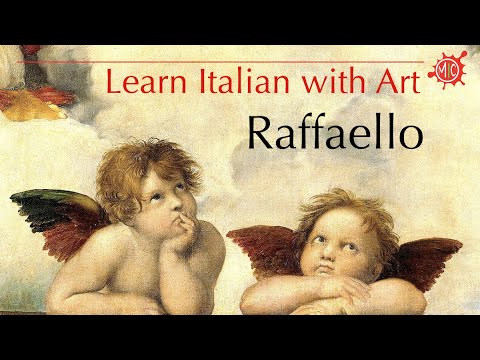
Yes, you can definitely learn Italian with art! In fact, studying Italian art can be a great way to improve your vocabulary and deepen your understanding of Italian culture.
Italian artists offer a fascinating window into the past, providing valuable insights into the cultural, social, and artistic milieu of their time. A study of Caravaggio’s paintings offers a glimpse into life in Rome during the 16th and 17th centuries, while the Renaissance masters’ works help us understand the period’s artistic and cultural accomplishments.
Learning Italian through the lens of art is an enriching experience, with masterpieces from the likes of da Vinci, Michelangelo, and Botticelli providing an excellent opportunity to broaden your Italian vocabulary related to art, as well as hone your reading and listening comprehension skills.
Sure, here are some tips for learning Italian with art:
- Start with basic Italian vocabulary: Before diving into the art, make sure you have a solid foundation of basic Italian vocabulary. This will help you understand the descriptions and information provided on museum placards or in art books.
- Study artworks with a language exchange partner: Find a language exchange partner who speaks Italian and is interested in art. Together, you can visit museums or view artworks online and practice discussing them in Italian.
- Read about Italian artworks in Italian: There is plenty of texts online that you can translate word by word, and learn vocabulary from it.
- Watch Italian movies about art: There are many Italian movies about art, just make sure to watch with Italian subtitles or even English for beginners, to improve your reading comprehension.
- Visit Italian Museums: If possible, visit Italy and immerse yourself in the language and culture. This will provide an opportunity to practice speaking with locals, attend Italian art classes, and visit museums and galleries.
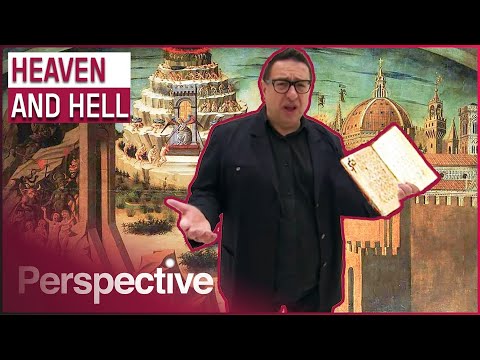
Conclusion
Of course, before diving into the world of Italian Art by yourself, you’ll need to have some basic Italian grammar covered, as well as to learn enough Italian vocabulary so you could at least understand the most basic art descriptions.
However, if you are an art enthusiast, you can start by watching short documentaries with English subtitles, just to get yourself familiar with the Italian pronunciation.
If you are interested in learning Italian, try out Italian Course.


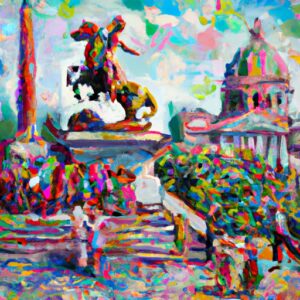
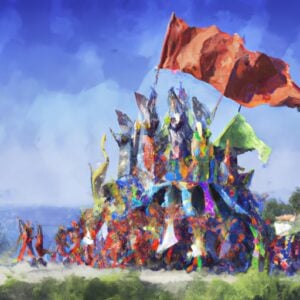
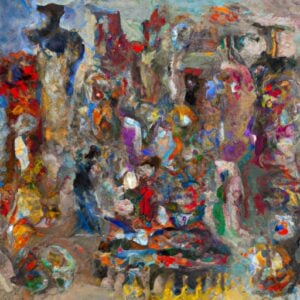
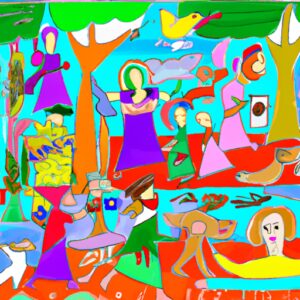




One Response
Great list! I can’t wait to explore these amazing Italian artists and learn more about their work. Grazie!